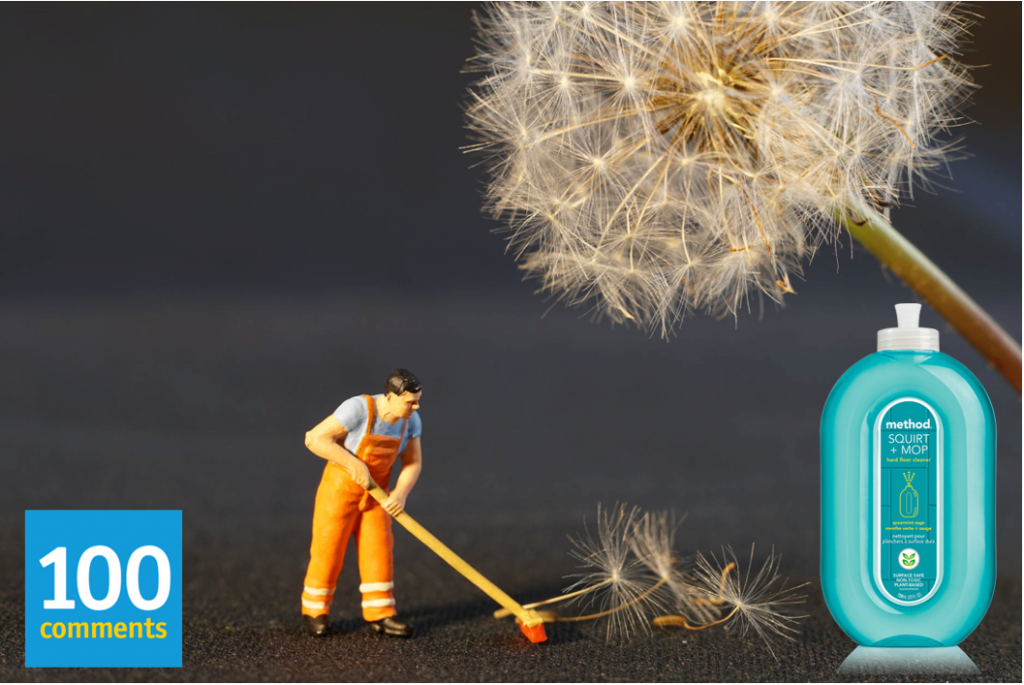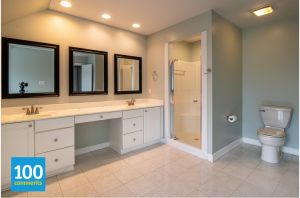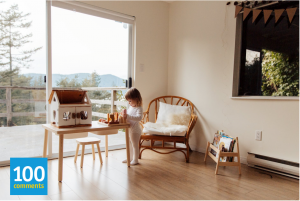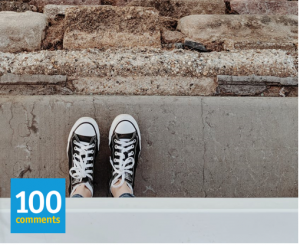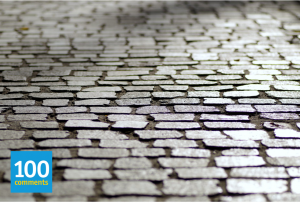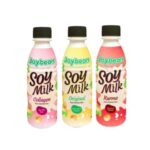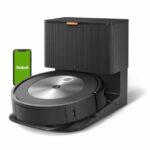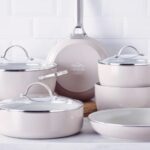The mark of a clean house is its shining, dirt-free and gleaming floor! Most people start their house-cleaning session by sweeping the floor first or vacuuming it, followed by mopping. In fact, floor-cleaning has been a major occupation in the world since – well – since the invention of brooms and mops themselves (we can’t include the yet-to-be-invented vacuum cleaner here), which probably goes way back to the medieval ages. Someone always had the job of keeping town hall floors to the floorboards in tiny cottages clean – be it a common sweeper or a scullery maid. The reason why there’s such an importance placed on floor-cleaning is that it is the largest component in a building, making up its entire layout – which also makes it the dirtiest, due to people transmitting dirt from the outside all over it via their dirty shoes/feet. Therefore, in order to keep our floors clean always, we need to practice good floor-cleaning hygiene in order from keeping the nasties from building up beneath our feet. Here are 5 different natural-based floor-cleaning solutions for various types of floors that are guaranteed to keep yours squeaky-clean.
Table of Contents
Marble floors
Marble floors are the latest rage in interior design. Most people opt for marble floors to give their houses, offices, and bathrooms a polished, modern touch. They are also in the easy-to-clean category – much like ceramic tiles (which we shall get into later). Unlike other heavy-duty tile types such as asphalt tiles, marble floors just need a good mopping daily with liquid wax – also known as a liquid floor cleaner. To make your marble floors shine brighter, add some fabric softener into the mix. Some gung-ho people also bleach their precious marble floors at least once a week – especially now during the Covid-19 outbreak, in order from preventing the virus from entering homes and multiplying on floors. These are general suggestions for mainstream cleaners and how the majority of housewives and maids clean marble floors. However, the guarantee of leftover toxic soap residue not being left behind isn’t there. For that, you would need cleaning substitutes like sudsy ammonia, hydrogen peroxide, and vinegar. However, these three cleaning substitutes aren’t always readily available locally – even if they are, the prices aren’t always the most reasonable. They also aren’t very practical.
Due to the former two not being available locally (even if they are, the prices aren’t practical either), you would have to purchase about 7 bottles of vinegar for a week’s worth of floor-cleaning – that is, if you fall in the aforementioned gung-ho category of cleaning your floors every day. If you aren’t the type to clean floors daily and only sweep/vacuum and mop once a week, that makes it one bottle per week. One whole bottle and not just halves or two-thirds, we say because scrimping on the solution when cleaning floors isn’t going to do its job well and you best not even clean your floors – if you are going to be stingy with the vinegar for “thrift” purposes. Therefore, using one whole bottle in one mopping session is the only way to go in order to get squeaky-clean, chemical-free floors. If you want to wash smaller areas in the house (like we covered in the previous article), these natural ingredients are fine. Just not floor-cleaning.
Ceramic floors
Next in the easy-to-clean category are ceramic floors. These are a timeless choice and the default tile selection for most floors (houses, malls, offices, etc) – which is later unnecessarily renovated to make way for marble floors due to the latter’s aesthetic qualities. Unnecessary, we say because ceramic floors are beautiful in their own simple way. However, with the advent of interior design and many rich people who live in luxurious homes who want their bungalows and mansions to look as glamorous as possible, marble is the current sought-after trend. Ceramic tiles, on the other hand – has been timeless, ageing way back to 15th century China. Ceramic tiles are also less apt to stain, which is why they have been a long-time favourite for domestic purposes (before marble took over) – to combat food stains in the kitchen, dining areas, or clumsy-fingered children who often make messes on the floor. This stainless quality is what puts ceramic tiles in the easy-to-clean category. However, keep in mind that there are 2 types of ceramic tiles – one glazed and another, matte (unglazed).
In order to clean glazed ceramic tiles, you can’t use harsh chemicals like strong soaps (the type that also leaves behind chemicals long after you mop it) and acids that might leave your precious kitchen tiles scratched. Use a water-based floor-cleaner instead. Or if you insist on going green and using only natural-based products, add baking soda to your mopping pail to form a soapy water solution. Use this solution to mop up your glazed ceramic tiles to prevent scratches. As for unglazed ceramic tiles, add vinegar into the mix because there is no glaze to form scratches in. For these puppies, you are free to use even bleach on them (because unlike their glazed cousins, unglazed ceramic tiles do stain to a certain extent – the part we forgot to mention earlier). To keep ceramic tiles shiny always, you can buy tile-glossers from your nearest hardware shop – but make sure they aren’t too harsh and also certainly make sure that they don’t leave behind un-eco-friendly residue after you clean.
Wooden floors
Also a rising trend, wooden floors need to be kept varnished at all times. Due to its pricing and relatively-hard upkeep, wood is only used for certain areas in the house – such as bedrooms. Offices employ wooden floors too – but that is mainly because the upkeep is maintained by the hired help. Not just any floor cleaner will do. The best way to clean a shellacked/varnished wooden floor is to use a special wood floor cleaner that you can find in hardware stores or online. However, once again – as per other mainstream floor cleaners – there are bound to be traces of toxic particles left behind after each mopping session, seeping into the pores of your feet and later your immune system, poisoning it gradually. In order to make up for that, as we did in points 1 and 2, we are going to recommend natural floor-cleaning ingredients. For wooden floors, the key cleaning ingredient is vinegar. Just add half a cup to your mop water and use it to clean the floor. As the only spots in your house with wooden floors are probably only your bedrooms, a bottle of vinegar may be able to last you quite long – especially if you’re a once-a-week cleaner. (Not for offices, though – as there is a larger square area covered).
Cement floors
For most people, cement floors are only limited to the outdoors, storerooms, or sheds. In the past, however (around the 1960’s-1980’s), cement floors made up the layout for village houses inhabited by our parents and grandparents. The more well-off families had their cement floors sealed to give it a glossy finish and painted (usually in green or brick-red) – like your childhood homes back in the kampong. The less fortunate ones just left theirs bare so it would always be dusty with surface dirt, warranting a daily cleanup. These days, people leave both sealed and unsealed cement floors to their sheds, storerooms, and verandahs alone. However, most people prefer to renovate all spots in their houses that employ cement floors, tiling them up because not only are they dull and unsightly, cement floors are the complete opposite of ceramic floors (less apt to stain). They soak up dirt fast, staining easily. Those of you who are not very particular about home renovations – who do not mind having cement floors in your houses need to clean your floors at least once a week.
To clean cement floors, you need to sweep up the surface dirt first (or vacuum) and later, mop it using floor cleaner and bleach (in order to get the dirt, grease, and stains out successfully). You might also need to bring a long-handled floor brush into the mix and scrub it real good. However, mainstream brands of floor cleaners, as well as bleach, aren’t very user-friendly (especially if you do not use slippers and walk barefoot outside or in your storerooms/sheds so the harmful leftover residue gets ingested into your body via your soles). Instead of bleach, a perfect substitute would be borax – which is only harmful if ingested or used internally by accident (e.g. on the eyes, inhaled). However, there still isn’t a 100% guarantee that there won’t be leftover, unseen chemicals staring at you without you even knowing.
Brick floors
As usual, we have saved the worst for last – and we have saved brick floors for the last as it’s hardest floor type to clean. If you thought cement floors were hard to clean due to their absorbent nature, brick floors are worse – especially because they are usually used outside for verandahs, gardens, and backyards, making them exposed to more dirt. To clean brick floors, your long-handled floor brush (that was previously suggested as an optional means to clean cement floors) is compulsory this time. You would need a super-strong floor cleaner for brick floors (but no bleach because in the long-run, the colour will start to fade). If you are afraid of using harsh chemicals, the option of using vinegar as a floor-cleaner exists. However, due to the large surface area covered – just like with other floor types – vinegar isn’t going to last very long.
Therefore, where exactly do paths cross in creating a solution that isn’t toxic but also ensures you wouldn’t have to waste your time and money on natural ingredients as floor cleaners? The answer is:
Method squirt+ mop hard floor cleaner
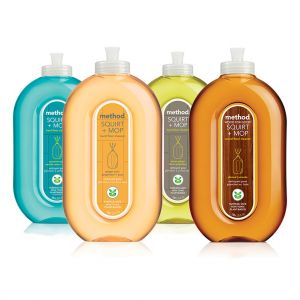
For more information, visit their Facebook page at https://www.facebook.com/methodproducts/. For glowing reviews, go to https://100comments.com/method-squirt-mop-hard-floor-cleaner/.
